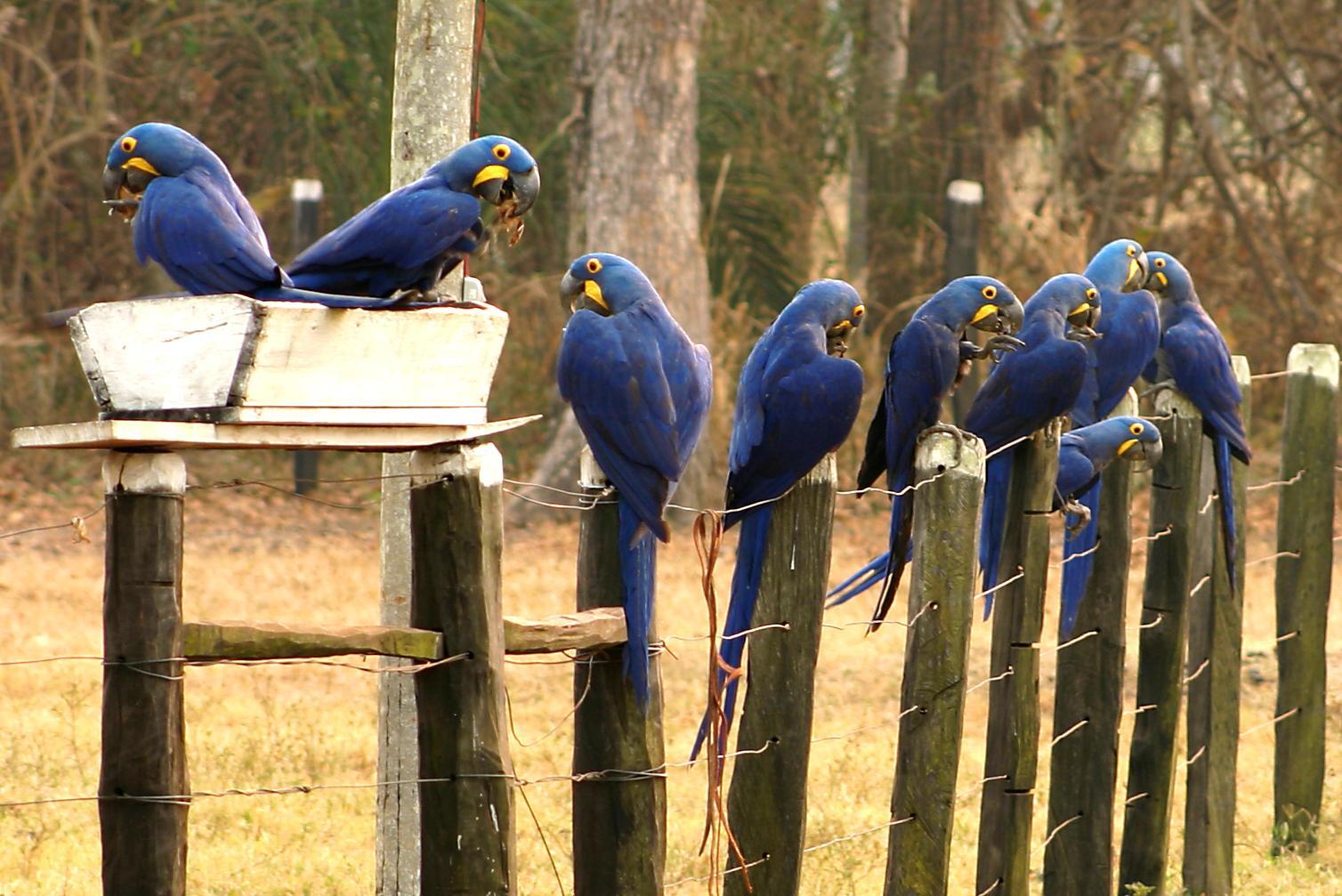Protection of Species in Tourism: Projects Arara-Azul and Onçafari

For many visitors, nature experiences and wildlife observation are the main focus of a trip to Brazil. The giant trees of the Amazon and the wetlands of the Pantanal provide crucial habitats for Brazil's extremely diverse animal world. However, especially with regard to growing awareness for environmental protection, one wonders: How are long-distance trips to Brazil compatible with species protection and sustainability? Can species protection and tourism find a common path?
The answer is yes. It is possible because the interests and goals are the same and, ideally, species conservation and tourism would strengthen each other. Projects Arara-Azul and Onçafari in the Pantanal have this very aim and allow travelers to gain an insight into the work of the scientists and, of course, unique opportunities to get close to the animals.
Arara-Azul: Protection of the Hyacinth Macaws in the Pantanal
In Aquidauana, Miranda and Campo Grande, Instituto Arara-Azul, an NGO, opens its doors to visitors to give them insight into its research endeavors. The team, organized by Dr. Neiva Guedes, takes care of animals in their breeding stages with great dedication and researches the behavior and necessary environmental conditions for hyacinth macaws in the Pantanal. The idea of involving visitors in the research and conservation measures arose, because tourists kept asking the scientists curiously, what exactly they were doing in their field work. Since 2000, this approach has been expanded and now visitors have the opportunity to accompany researchers personally, such as when they monitor breeding sites and measure and weigh new-born chicks. Naturally, care is taken to ensure that the animals are only handled by specially trained staff.
Onçafari: On the Trail of the Jaguar
Those who want to get close to the big cats of the Pantanal, can have a unique experience by visiting the Onçafari project. The project was launched in August 2011 and aims to study the jaguars, their social behavior and needs, environmental protection and the socially acceptable economic development of the region. Tourism comes into play in the latter point.
Most of the animals in these research areas are known by name to the scientists. They can be identified and observed in the absence of humans. Some of the jaguars are equipped with tracking devices, allowing scientists to study their actions and the spread of their territories. The Onçafari project operates a sanctuary and also cares for injured and orphaned young animals.
Visitors to Onçafari can observe the jaguars in their natural environment from safari cars at a safe distance and accompany the researchers on their field work. They not only see these impressive animals for themselves but they also experience the unique ecosystem of the Pantanal in all its beauty.
Travelers Experience Species Protection in Practice
Even when planning a vacation in Brazil, travelers can find out in advance what possibilities there are to actively support local projects in species conservation. The projects presented here focus on the scientific aspect and visitors can get up close and personal with this indispensable work. They can observe the animals at close range in their natural environment without directly interfering with them or unconsciously influencing their behavior. For the Pantanal and many other regions, projects like Arara-Azul and Onçafari are considered models and trailblazers for species conservation in tourism.
Image credits: Cassiano Zaparoli
We thank the staff of the projects Arara-Azul and Onçafari for the provided information.

